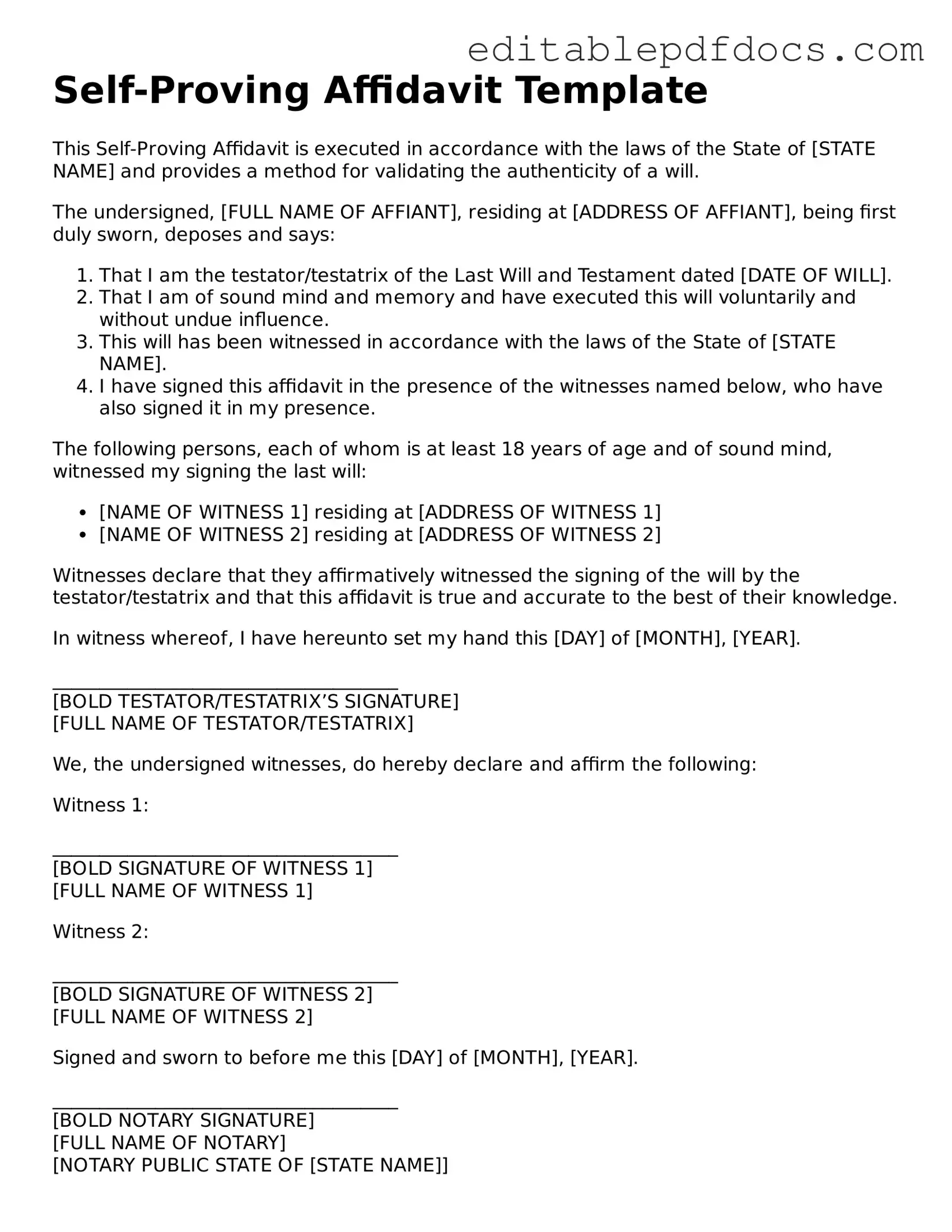Completing a Self-Proving Affidavit can be a straightforward process, but there are common mistakes that individuals often make. One frequent error is not having the document signed in the presence of a notary. This step is crucial because a notary's acknowledgment adds validity to the affidavit. Without this signature, the affidavit may not be accepted in court.
Another mistake involves failing to include all necessary information. Some people overlook essential details, such as the names of witnesses or the date of execution. Omitting these elements can lead to confusion or disputes regarding the validity of the will. Ensuring that every required field is filled out accurately is vital for the document's acceptance.
Additionally, many individuals neglect to review the completed form for errors. Simple typos or incorrect names can undermine the entire affidavit. Taking the time to proofread can prevent future complications and ensure that the affidavit reflects the true intentions of the testator.
People also sometimes forget to provide adequate identification for the witnesses. The affidavit requires that witnesses be identified properly, including their addresses. Without this information, the affidavit may not hold up under scrutiny, especially if its validity is challenged.
Misunderstanding the purpose of the Self-Proving Affidavit is another common issue. Some individuals may think it serves as a substitute for a will, rather than a means to affirm the validity of a will. It is essential to understand that this document only serves to strengthen the enforceability of the will, not replace it.
Finally, individuals often fail to keep a copy of the signed affidavit with their important documents. After execution, it is crucial to store the affidavit in a secure location alongside the will. Without access to the affidavit when needed, the benefits it provides may be lost, leading to potential legal challenges.
